Hang gliders and paragliders: Turf war in the skies
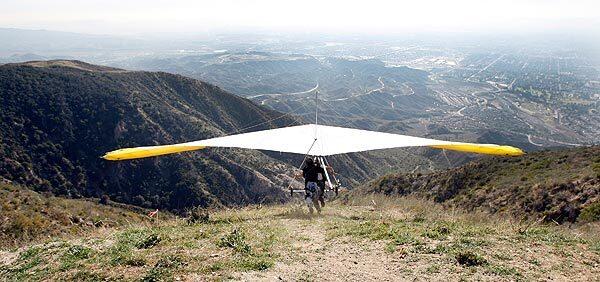
On a hazy afternoon, Joe Greblo gets a running start and leaps off Kagel Mountain for a flight over Sylmar. As the age of a typical “hangie” soars into the 60s and 70s, many worry less about their own survival and more about the future of the sport they love and helped invent in the sun-baked mountains around Los Angeles. (Kirk McKoy / Los Angeles Times)
As paragliding booms, aging hang gliders who once ruled the skies fear for the future of their sport.
See story
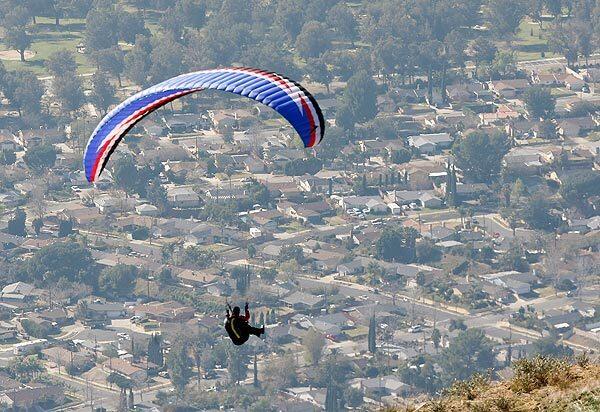
Today, most younger pilots favor the soft-winged paraglider a steerable parachute with no rigid frame pioneered by French alpinists looking for something light and compact enough to stuff into bags and carry on their backs up rugged peaks. From there, they would launch themselves for an aerial tour of their climbing route and a suitably stylish descent to the valley floor. (Kirk McKoy / Los Angeles Times)
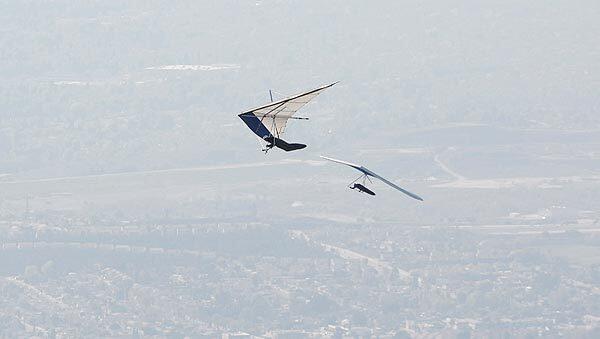
For hang gliders, there is a practical concern: Fewer pilots means manufacturers may go out of business, making it hard to replace worn-out gear. But there is an emotional side, too: Many hang gliders have risked their lives for decades and seen friends killed honing skills that allow men to soar like birds of prey. It hurts to see that knowledge abandoned in favor of paragliding, a sport that at first seems as hard to master as sitting in a lawn chair. (Kirk McKoy / Los Angeles Times)
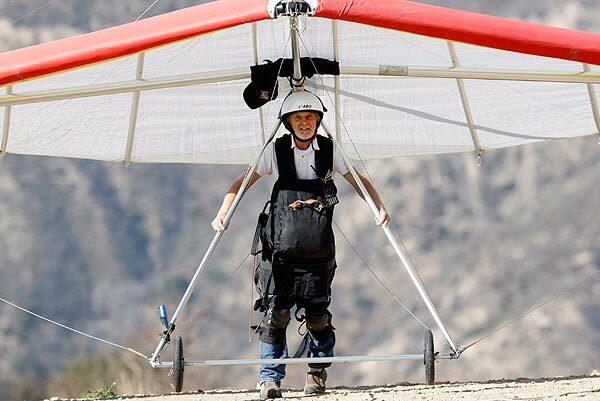
Veteran “hangie” Joe Greblo rolls his glider to the edge of Kagel Mountain. Bowing to the seemingly inevitable, the U.S. Hang Gliding Assn. added and Paragliding to its name a few years ago. In 2011, the number of paragliding members (4,066) surpassed the number of hang gliders (3,922) for the first time. (Kirk McKoy / Los Angeles Times)
Advertisement
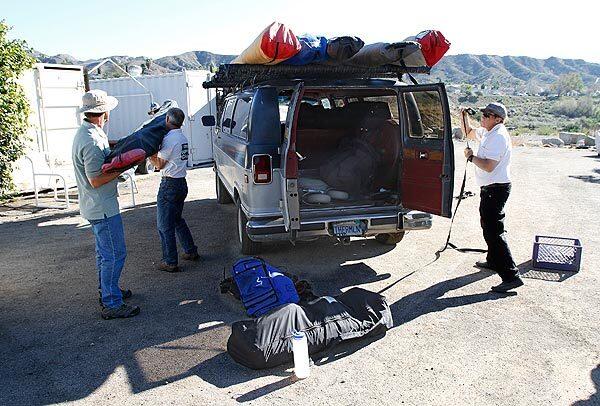
One problem with hang gliders is their big, awkward frames. Getting them up the hill usually requires a truck, or a large van, with a roof rack. Once at the launch, it takes time to assemble their metal tubes, steel wires and complicated harnesses. That rigid frame, though, means most hang gliders can fly twice as far and twice as fast as most paragliders and, significantly, a hang glider will knife through the turbulence surrounding rising columns of air known as thermals with much less drama. But it takes longer to learn to handle all the power. (Kirk McKoy / Los Angeles Times)
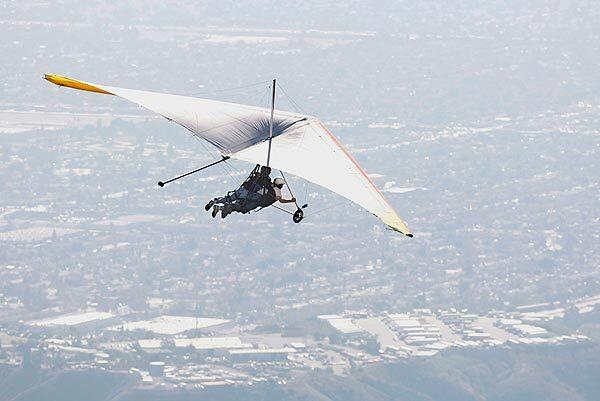
Like followers of any creed who go their separate ways think skiers and snowboarders hang gliders and paragliders sometimes regard each other with a suspicion that borders on tribal. (Kirk McKoy / Los Angeles Times)







